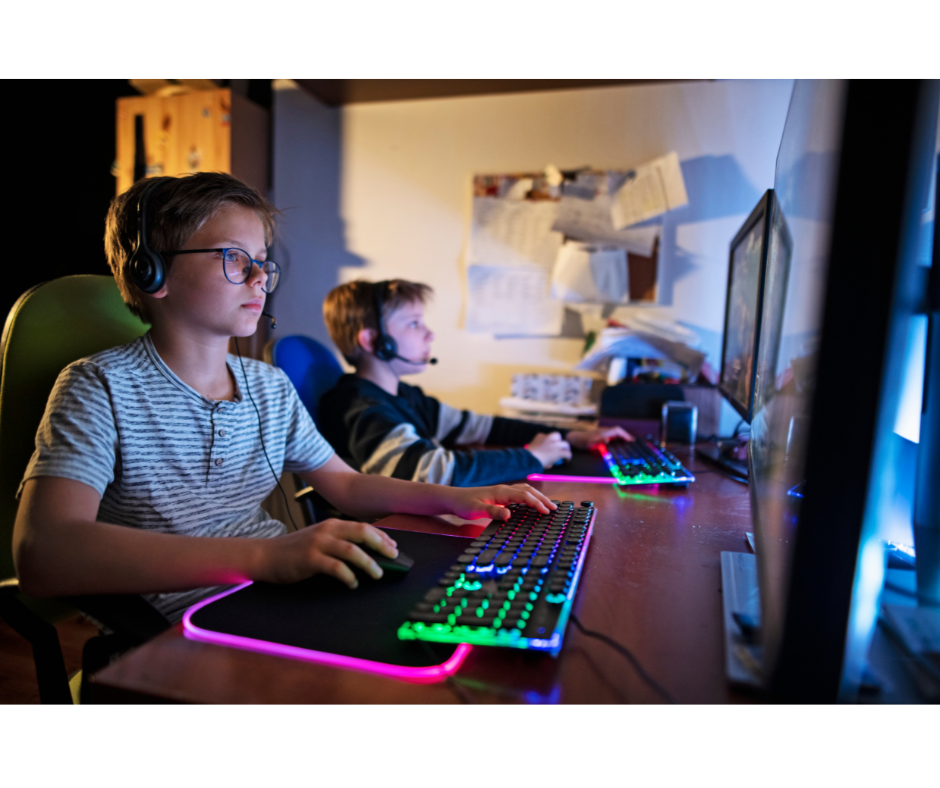
Five Ideas to Overcome the Challenge of Virtual Learning This Fall
Most of us weren’t quite sure what would happen when the nationwide quarantine was mandated and both parents and their kids found themselves attempting to work from home. What we now realize is that those students and their parents agree on one thing:
Virtual learning didn’t work too well.
Most moms and dads agree there is a huge problem with distance learning. Mom and dad would take turns working in the kitchen with their children, just to hold them accountable to get their work done. The other would hunker down in the bedroom or den trying to make the most of the hour. At times the house became noisy and chaotic. One parent said, “We barely survived the months of March through May, and I am not prepared to have my kids home this fall. I am begging my school district to let them back on campus.”
“My teens were saying ‘This is hell’,” one parent of middle schoolers said. “My kids feel isolated, and they can’t keep up, and they’re struggling with it.”

The Problem With Distance Learning
According to USA Today, “Nationwide,only one in three districts expected teachers to provide remote instruction and monitor students’ academic engagement this spring, according to a study that tracked 477 districts.” The problem is, of course, we weren’t ready for this new normal. Nobody was prepared for a pandemic, where all students — kindergarten through college — would be forced to learn in a different way, even at-risk, disabled, and special needs kids. Now, the American Academy of Pediatrics is urging schools to prioritize in-person classes because of the negative social, emotional, and academic effects of school closures.
“Policies to mitigate the spread of COVID-19 within schools must be balanced with the known harms to children, adolescents, families, and the community by keeping children at home,” says new guidance from an organization representing about 67,000 pediatricians.
1. Many homes for teachers and students lack computers or high-speed internet access.
At least 15 million out of America’s more than 50 million schoolchildren live in homes without access to a computer, or access to high-speed internet, according to a national report recently released that tried to quantify the extent of the “homework gap.” What’s more, the study estimated between 300,000 and 400,000 teachers lacked access to computers or high-speed internet.
2. Many families are led by a single parent with multiple kids.
Single moms are my heroes. They’re often in a situation they never bargained for, attempting to be the breadwinner, cook, therapist, chauffeur, nurse, caregiver, good cop and the bad cop. And now — the teacher. It’s almost impossible to do all of it well.
3. Many homes already endured mental health crises and domestic abuse.
A study evaluating the psychological effects of quarantine found that 28.9% of participants had symptoms of post-traumatic stress disorder (PTSD) and 31.2% had symptoms of depression. Twenty-four other studies documented the effects of quarantining and showed that people in quarantine had symptoms of low mood, stress, anxiety, and depression. Even further, calls to mental health crisis hotlines (in many spots) spiked 900%.
4. Virtual learning has not kept up with in-person learning so far.
Recent studies show when students switch to virtual charter schools from brick-and-mortar schools their achievement drops. One Indiana study compared outcomes and saw them drop for students attending virtual schools.
Five Ideas to Employ If Your Kids Are at Home
Nationwide, parents are split on sending their children back to classrooms. A slight majority 56% – said they want their children to attend schools full time this fall, according to a Gallup poll this month. But in a USA Today poll in late May, six out of ten parents said they were more likely to pursue at-home learning options. The debate is real between wanting kids safe from COVID-19 and wanting kids to actually learn and achieve under professional educators.
1. Develop a clear daily schedule.
People need clarity to gain energy. The homes that had a difficult time adjusting to the quarantine failed to immediately post a clear agenda, with to-do items and measurements of success. One path toward clarity is a daily agenda that outlines each activity and goal with specific time slots and then post it for all to see. Structure is important because it promotes progress and encourages kids to stay engaged.
2. Set up different areas for different activities, subjects, and goals.
Most adults and kids fair better when rooms are utilized for specific activities. This way, your brain sets an expectation with each location. You may have an arts and crafts area; an open space for physical education; and a place for reading with no distractions or screens. Each learning spot can re-engage them with a new subject and goal.
3. Look for lessons in your everyday life and discuss them.
I probably overdid this with my kids as they grew up, but our kids learned that life itself had a way of teaching lessons, and we constantly made the world our classroom: where ingredients come from as we cooked in the kitchen, watching movies, growing gardens, meeting people, etc. By the way, recipes are a great way to teach math, science, reading, and history. We had lots of discussions along the way. Look to nature for even more lessons, including adventure walks where you look for certain rocks, animals, birds, etc.
4. Give them ownership of what and how they learn.
Obviously, kids earn the right to autonomy as they mature, but when they demonstrate the ability to learn on their own, give them the freedom to do so. You’ll likely find they engage better in their growth and actually learn more because they figured it out. This generates “just in time” learning experiences as opposed to hypothetical ones. Set a learning goal mutually, then turn them loose and assess how they do.
5. Set an example for lifelong learning.
Nothing reinforces a successful adjustment to in-home learning than becoming a guide for them in reading, problem solving, creativity, etc. Model this for them in your lifestyle, and let them see you do it organically.
Brian Herbert wrote, “The capacity to learn is a gift. The ability to learn is a skill. The willingness to learn is a choice.” Michelangelo said, “I’m still learning” . . . and he was 87 years old.






